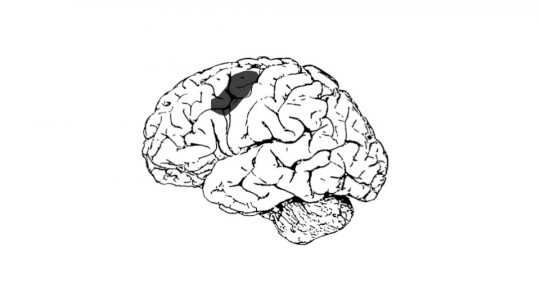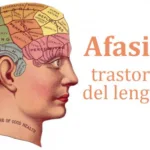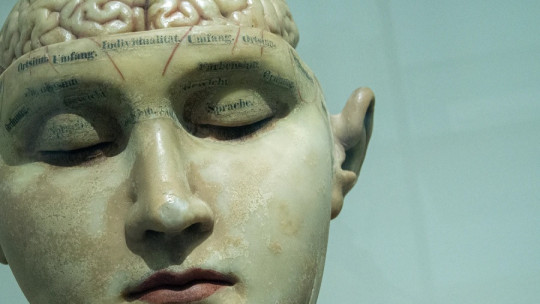
Aphasia consists of a loss of the ability to express and/or receive language due to brain injury or damage. There are different types of aphasia that affect, to a greater or lesser extent, different abilities related to the production and understanding of speech, reading and writing, depending on the areas of the brain that are affected.
In this article we will talk about the differences between Broca’s aphasia and Wernicke’s aphasia and we will see what its characteristics and symptoms are.
Broca’s aphasia: definition, characteristics and symptoms
Broca’s aphasia or expressive, motor or non-fluent aphasia, Named after the French anatomist Paul Broca which contributed to the study and understanding of the origins of this aphasia, is a language disorder caused by a lesion in the third frontal gyrus of the left hemisphere, known as Brodmann’s area 44 or Broca’s area.
Broca’s area is a region of the brain related to the production and expression of language, as well as the programming of verbal behaviors; That is, it is responsible for planning the necessary movements of the mouth and face to pronounce and articulate words. It also intervenes in the morphosyntactic management of language and in the selection and discrimination of appropriate sounds (inhibiting irrelevant stimuli or sounds).
People who have this disorder have great difficulties articulating and verbalizing words and expressions, with a great impediment to producing grammatically complex sentences (called agrammatism); In short, they are not able to form meaningful sentences (for example, saying “book child” instead of “the child is reading a book”).
In addition, speech becomes unproductive and fluent, with little verbal content; Furthermore, the patient tends to make mistakes and use repetitions and fillers when speaking. Reading and writing problems also become evident, as well as difficulties repeating sentences and pronouncing single words or short phrases (the patient invests a lot of effort to do this).
Broca’s area is connected, through the arcuate fasciculus, to another region of the brain involved in language reception, called Wernicke’s area. This region is related to another type of aphasia that bears its name: Wernicke’s aphasia, which we will talk about next.
Wernicke’s aphasia: definition, characteristics and symptoms
Wernicke’s aphasia, sensory aphasia or receptive aphasia, is named after the German neurologist Carl Wernicke who described this aphasia and investigated its differences with respect to motor or Broca’s aphasia, it is a language disorder caused by a lesion in the posterior third of the superior temporal gyrus, known as Brodmann’s area 22 or Wernicke’s area.
Wernicke’s area is a region of the brain responsible for understanding and receiving language (Oral and written). It covers the posterior area of the left temporal lobe. This region is activated when we say words and when we listen to them, and when we plan a speech. The main function of this brain area is to identify, process and interpret phonetic sequences and the meaning of sounds.
The degree of involvement and clinical manifestations caused by Wernicke’s aphasia are variable. Some people may develop a complete inability to understand spoken or written speech, while others may retain the ability to understand conversation or single sentences.
The main characteristics of this neurological disorder are:
Differences between Broca’s aphasia and Wernicke’s aphasia
Both Broca’s aphasia and Wernicke’s aphasia involve a language alteration due to lesions in various areas of the brain ; However, the differences between one disorder and another.
On the one hand, one of the basic differences has to do with the function and location of the brain regions that are affected in both aphasias In Broca’s, the person’s ability to express language is affected when damage occurs to the frontal areas, unlike what occurs in Wernicke’s, in which the ability to receive language is affected, for example. damage to areas of the temporal lobe.
On the other hand, in Wernicke’s aphasia there is a severe deficit in speech understanding and patients are not aware of it; on the contrary, In Broca’s aphasia, language comprehension is practically unaffected and the patient has the feeling that he understands speech better than he knows how to express himself.
Another notable difference between Broca’s and Wernicke’s aphasia has to do with the fluency of speech Patients who suffer from Broca’s aphasia are not able to speak fluently and, however, people with Wernicke’s aphasia do retain verbal fluency. Likewise, repetition ability is impaired in both aphasias, but naming problems tend to occur more in Broca’s aphasia than in Wernicke’s.
In relation to reading and writing, it should be noted that in both types of aphasia these processes are altered; However, in Wernicke’s aphasia, graphics and certain automatisms are usually preserved.
Finally, with regard to age, it has been found that Younger patients tend to be more likely to have Broca’s aphasia and the older ones were Wernicke’s aphasia, with a difference of 12 years on average between both types of aphasia.








